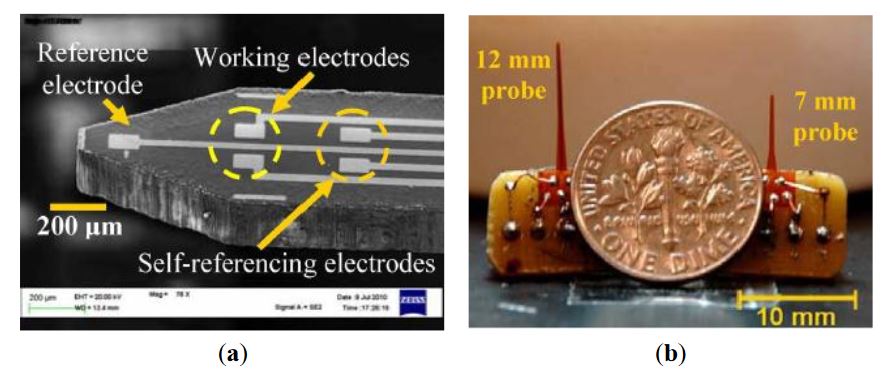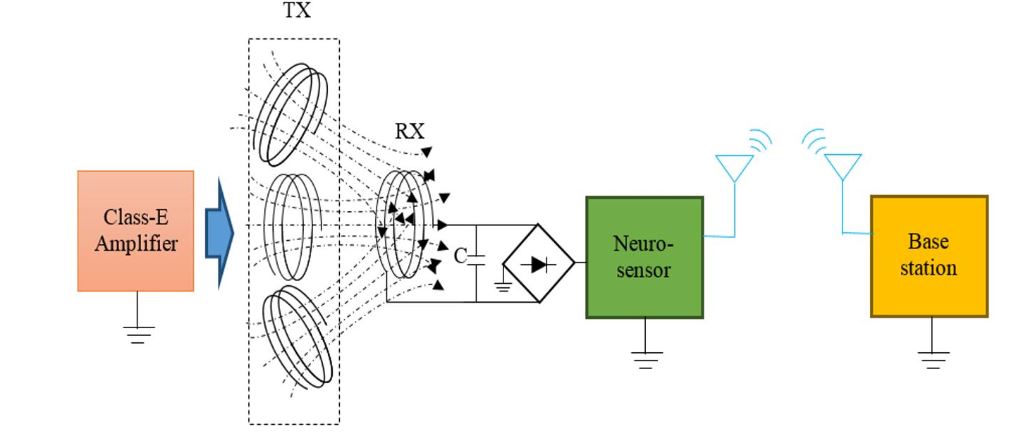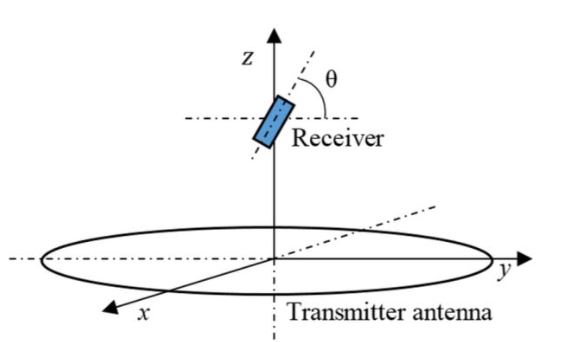ABSTRACT
In this paper, we report a power management system for autonomous and real-time monitoring of the neurotransmitter L-glutamate (L-Glu). A low-power, low-noise, and high-gain recording module was designed to acquire signal from an implantable flexible L-Glu sensor fabricated by micro-electro-mechanical system (MEMS)-based processes. The wearable recording module was wirelessly powered through inductive coupling transmitter antennas. Lateral and angular misalignments of the receiver antennas were resolved by using a multi-transmitter antenna configuration.
The effective coverage, over which the recording module functioned properly, was improved with the use of in-phase transmitter antennas. Experimental results showed that the recording system was capable of operating continuously at distances of 4 cm, 7 cm and 10 cm. The wireless power management system reduced the weight of the recording module, eliminated human intervention and enabled animal experimentation for extended durations.
EXPERIMENTAL SECTION

Figure 1. (a) Scanning electron microscopy (SEM) photo of the probe tip indicating two working electrodes (WE)
Figure 1a illustrates two L-Glu sensors on a probe with two separate WEs and SREs electrodes. The RE was made of silver/silver chloride (Ag/AgCl) by chloridization of a silver electrode in a 1-M hydrochloric acid solution with saturated sodium chloride. The WE and SRE were made of gold using a physical deposition process. The RE in this design was shared by the two L-Glu sensors to reduce probe dimensions. Figure 1b shows a photograph of two probe designs with lengths of 7 and 12 mm. Copper wires were connected to each electrode of the probe using silver epoxy.

Figure 3. Block diagram of the wireless power harvester for the wearable neurotransmitter sensor module
The neurotransmitter sensor recording system was designed to be powered by a WPT system. The block diagram of the WPT system is shown in Figure 3. A class-E amplifier was driven by an external power supply to convert a DC source into RF energy, which was transmitted through an array of transmitter antennas. Figure 3 illustrates how multi-transmitter antennas (TXs) were used to guarantee sufficient energy transfer to the receiver antenna (RX) at any location in the animal confinement space.
RESULTS AND DISCUSSION

Figure 5. Radiation patterns of the normal field components Hz generated by the transmitter
Radiation pattern of the TX antenna was analyzed with an electrical current of 1A flowing in each loop. When the RX antenna was much smaller than the TX antenna and was in parallel with it, only the normal field component Hz contributed to the energy harvested. Figure 5 illustrates the magnetic field distributions of the normal field components Hz in the cross-section planes at different distances z of 4, 7, 10 and 11 cm from the TX antenna.

Figure 7. Angular misalignment θ between the TX an d receiver (RX) antennas
In the practical scenario, angular misalignment between antennas occurred when the freely-moving rat carrying the wireless module moved its head. Figure 7 illustrates the angular misalignment θ between the TX and RX antennas. Since the spiral TX and radial RX antennas were symmetric, the angular misalignment θ was made by rotating the RX antenna along the x-axis to form an angle θ with the y-axis.
CONCLUSIONS
We have designed and demonstrated a wireless power transfer system for powering a wearable and wireless neurotransmitter sensor recording system. Simulation for electromagnetic field distribution and experimentally measured load voltages at various distances with different antenna configurations were in close agreement. A multi-antenna system as power transmitter provided a better effective coverage, especially at the edges inside the animal cage. The low-power neurotransmitter sensor recording module dedicated for L-Glu sensing was successfully powered and operated by the wireless power transfer system. The study demonstrated that the module can be autonomously operated without carrying battery packs on small animals in long-term experiments.
Source: University of Texas at Arlington
Authors: Cuong M. Nguyen | Pavan Kumar Kota | Minh Q. Nguyen | Souvik Dubey | Smitha Rao | Jeffrey Mays | J.C. Chiao
>> Antenna Design Projects for Final Year Students
>> More Wireless Energy Projects for Engineering Students